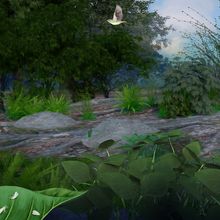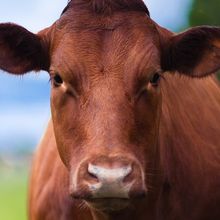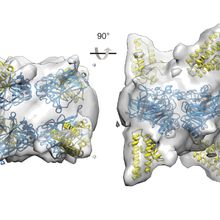Login
SubscribeJuly 2022, Issue 1 Table of Contents
Feature

Horizontal Gene Transfer Happens More Often Than Anyone Thought
Christie Wilcox, PhD | Jul 5, 2022 | 10+ min read
DNA passed to and from all kinds of organisms, even across kingdoms, has helped shape the tree of life, to a large and undisputed degree in microbes and also unexpectedly in multicellular fungi, plants, and animals.
Speaking of Science
Ten Minute Sabbatical
Ten Minute Sabbatical
Take a break from the bench to puzzle and peruse
Critic at Large
Opinion: Many Clinical Trials Fail to Navigate the Literature
Opinion: Many Clinical Trials Fail to Navigate the Literature
Too often, studies that aim to develop new treatments for patients fail to adequately cite and build upon research that preceded them.
Notebook
How Mange Remade an Ecosystem
How Mange Remade an Ecosystem
A study traces the effects of a mite outbreak from the earth to the heavens.
Pufferfish Don’t Need Functional Stomach, Inflate Instead
Pufferfish Don’t Need Functional Stomach, Inflate Instead
The fish use their stomach to swell up to three times their size. Is this why they can’t use the organ to digest proteins?
Slideshows
Slideshow: Examples of Eukaryotic Horizontal Gene Transfer
Slideshow: Examples of Eukaryotic Horizontal Gene Transfer
Horizontally transferred genes play significant roles in eukaryotic genomes
Infographics
Infographic: Possible Mechanisms of Gene Transfer in Eukaryotes
Infographic: Possible Mechanisms of Gene Transfer in Eukaryotes
Genetic studies have made it clear that eukaryotic horizontal gene transfer can and does happen. Exactly how, though, remains speculative.
The Literature
Bull Ant Venom Evolved to Make Bites More Painful to Mammals
Bull Ant Venom Evolved to Make Bites More Painful to Mammals
A peptide found in bull ant venom closely resembles a hormone of its primary predator, triggering hypersensitivity and making subsequent bites even more painful than the ones that came before.
Fusion with Spider Silk Increases Anticancer Protein’s Stability
Fusion with Spider Silk Increases Anticancer Protein’s Stability
Scientists found that combining the notoriously flimsy anticancer protein p53 with a domain from a spider silk protein resulted in a more stable hybrid that’s more potent and easier for cells to synthesize.
Foundations
Masking Up, 1619 to Present
Masking Up, 1619 to Present
Putting on a mask to protect oneself and others against disease is nothing new, nor is resistance to mask-wearing, but mask designs have changed considerably from their first iterations.









